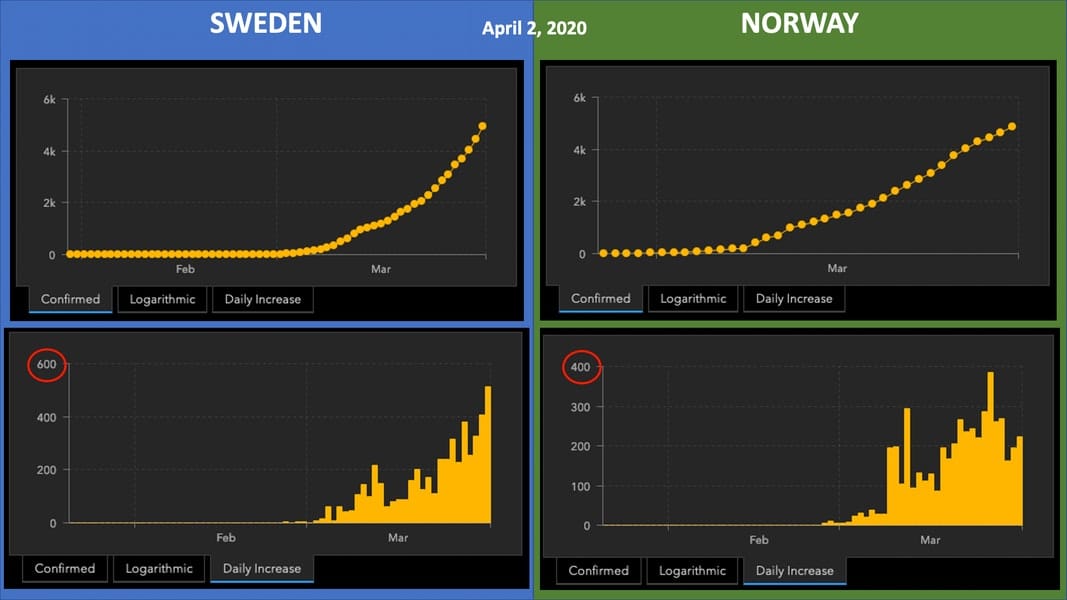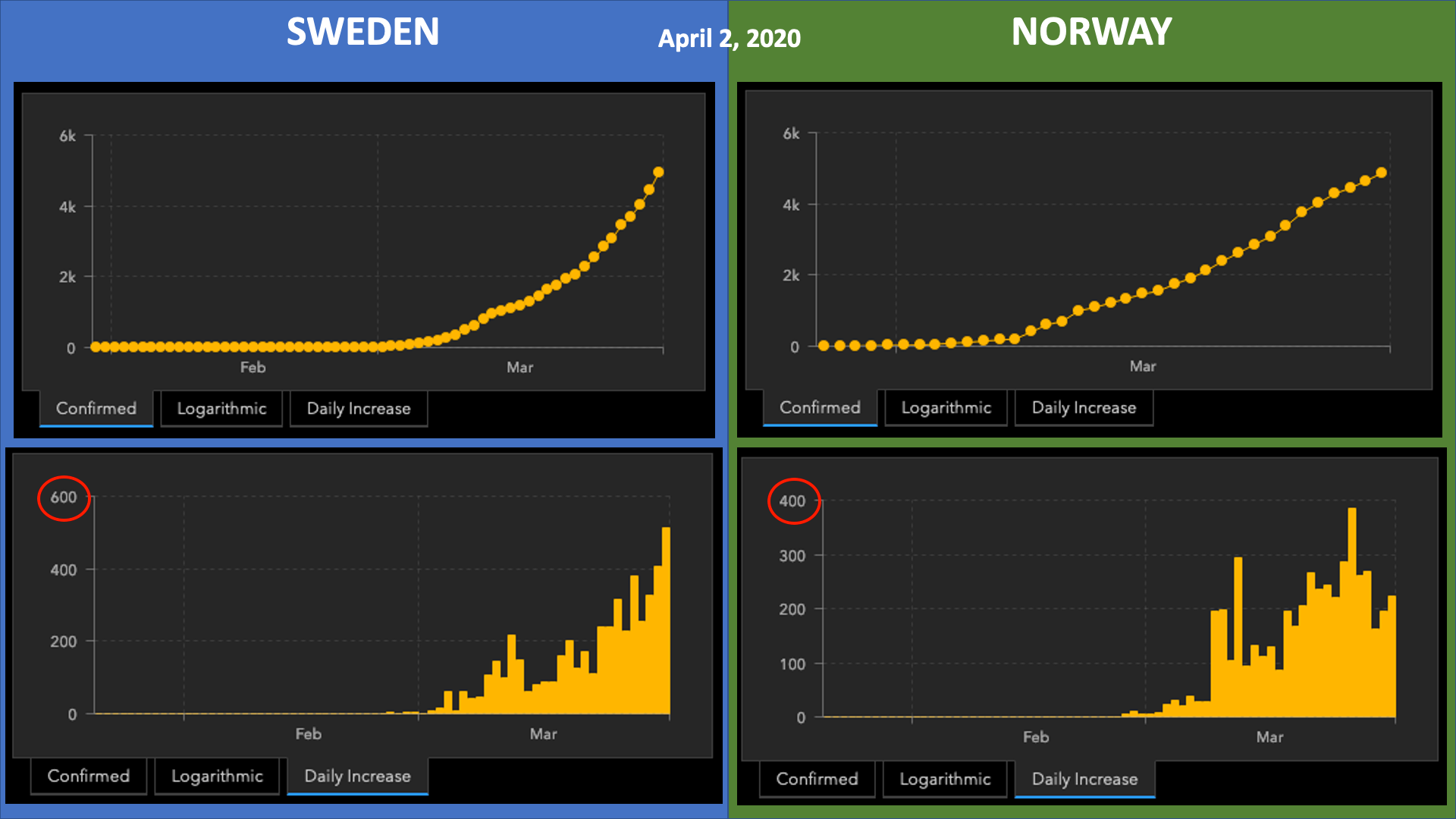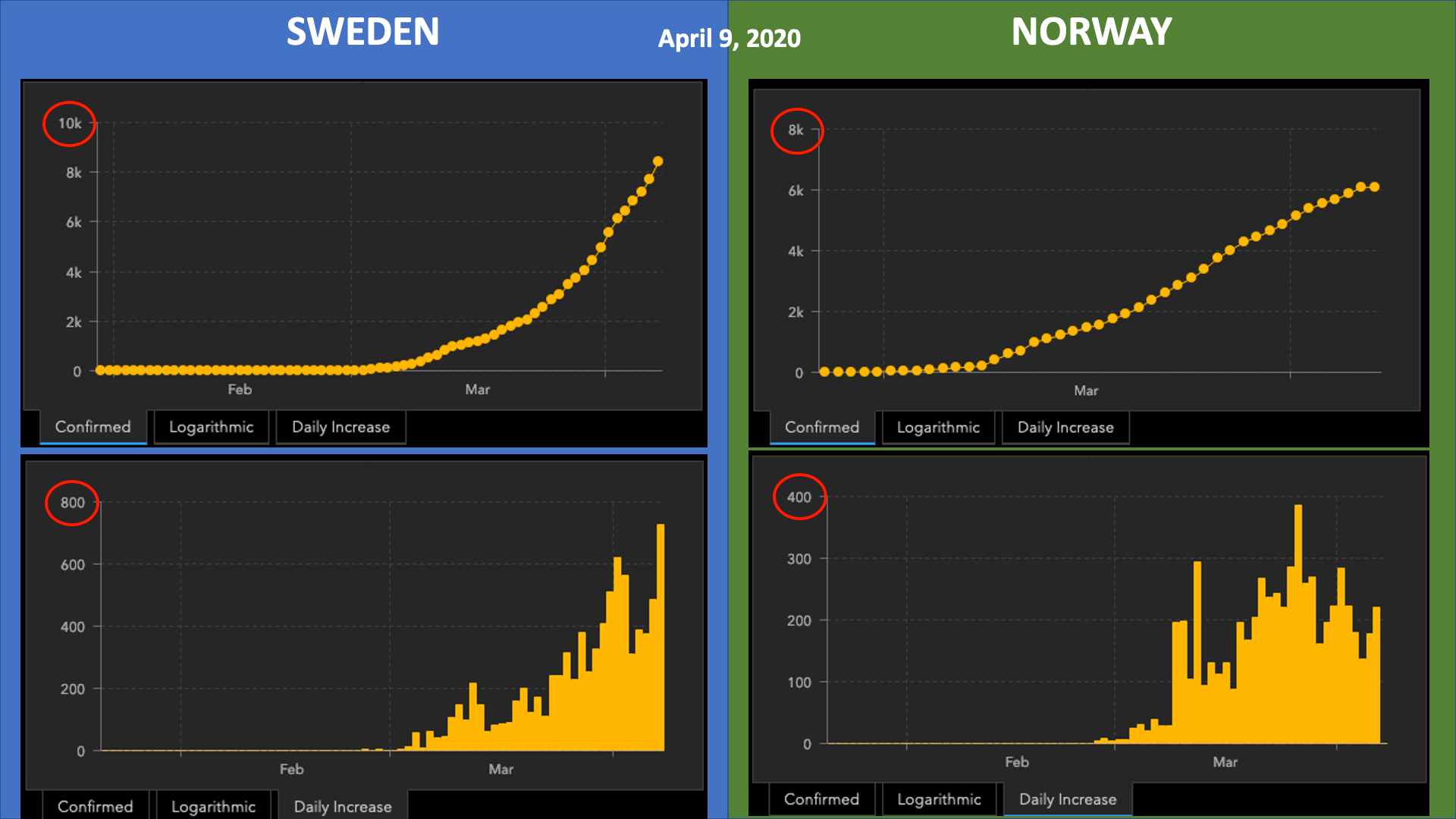Sweden vs. Norway Amidst Covid-19
An experiment backfires in one of the world's nicest countries

A quick post to illustrate how quickly bad public policy can fail in the face of virulence with exponential spread.
Last week, the cases and trendlines for Sweden and Norway were as shown below (via the JHU Coronavirus Resource Center). These countries are neighbors, sharing a long border, a lot of economic features, and many cultural attributes. As Rachel Maddow put it, “they’re kind of like our Vermont and New Hampshire” to those of us in the US.
But Sweden has been pursuing a policy of limited public interventions and keeping schools and its economy open, while Norway has closed schools, public spaces, and non-essential businesses.
So, how to they compare? As of last week, here are the most relevant charts:

Notice the differences in the y-axes, with Sweden’s already 1.5x higher than Norway’s as of last week. The y-axes in the “Confirmed Cases” trend boxes were the same last week.
Now, today:

Both Swedish y-axes are higher than Norway’s. This time, capturing the “Daily Increase” for Sweden requires 2x the y-axis as Norway (their y-axis remained the same), while the “Confirmed Cases” y-axis for both increased — Norway, because they nosed over 6,000 cases as their curve appeared to flatten; Sweden, because they surged to over 8,000 cases.
Death tolls tell an equally grim story, with the Washington Post reporting yesterday:
While the Scandinavian countries reported their first fatalities at roughly the same time, Sweden as of April 8 had 687 fatalities, Denmark 218, and Norway 93. In per capita terms, Sweden is faring clearly worse than Norway and increasingly worse than Denmark.
On top of this, there are reports that Covid-19 has spread to 1/3 of the nursing homes in Stockholm.
Did this forestall economic damage? If so, then Sweden had better brace for another blow, as the Post reports:
. . . there [is not] much indication that the Swedish economy is weathering the storm better than comparable countries. The drop in the stock market and the rise in unemployment are roughly in line with other advanced economies.
Italy and Spain are suffering the worst economic downturns and the worst disease outbreaks. Early on, public health officials portrayed a choice between proactive interventions leading to early economic damage and slower disease progression, or passive responses leading to faster disease progression and delayed but potentially even more severe economic damage.
It appears Swedish leaders believed there was a magical third path — an acute, short-term disease phase and little economic damage.
So much for magic.